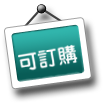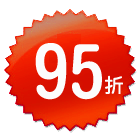序
Target Reading 3 is the third volume of a series of books concentrating on training reading skills. Each article is designed with six essential questions to help the readers understand the article. These questions are within the framework of the following categories:
Main Idea
The readers will have to ask themselves, “What point is the writer trying to make?” By asking this question, they will be aware of looking for an answer during the reading process.
Subject Matter
The subject matter question can help readers focus on the articles they are reading. After reading the first few lines of the article, the readers should ask themselves, “What is the subject matter of this article?” They will be concentrating instantly.
Supporting Details
The article is made up of details that support the main idea. Supporting details come in various forms, such as examples, explanations, descriptions, definitions, comparisons, contrasts, and metaphors.
Inference
Inference questions ask the readers to find the inferences and assumptions made in the article. The main goal of the question is to train readers to think critically and logically.
Vocabulary/Phrases
Vocabulary and phrases are important in understanding an article. Imposing inaccurate meanings of some key words or phrases can lead to a gross misunderstanding of the author’s message.
Clarifying Devices
The author might use similes and metaphors to capture the readers’ attention and spark their imaginations. The most widely used clarifying devices are signal words (first, second, next, last, finally, etc.), and transitional words (in brief, in conclusion, above all, therefore, since, because). Organizational patterns are also clarifying devices. One such pattern is the chronological pattern, in which events unfold in the order of time
?

